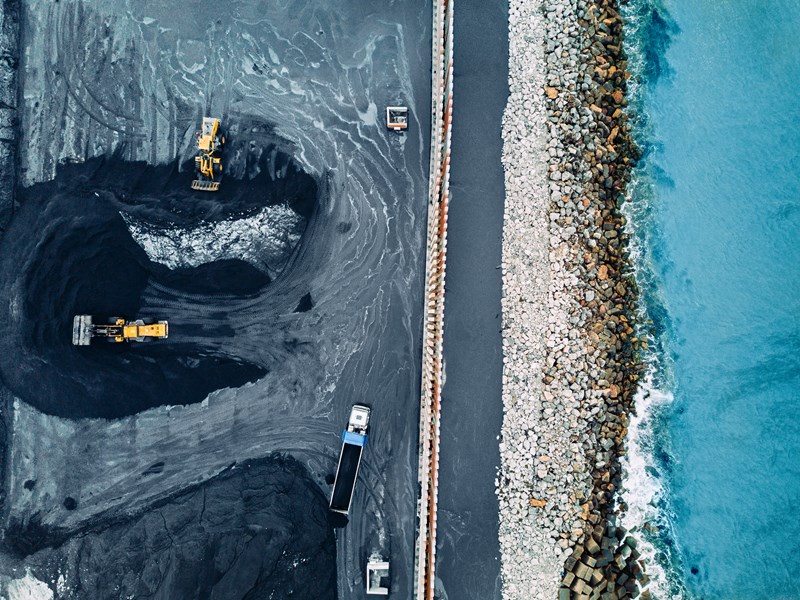How decarbonisation will drive mining supply-side adjustments
Governments, consumers and producers will push and pull metals and mining to reduce emissions
1 minute read
James Whiteside
Head of Corporate, Metals & Mining

James Whiteside
Head of Corporate, Metals & Mining
With 15 years of experience in the metals and mining industry, James leads our corperate coverage.
Latest articles by James
-
Opinion
Corporate metals and mining: 5 things to look for in 2024
-
Opinion
Scope 3 considerations in metals and mining investment
-
Opinion
Top steps miners can take to reduce scope 3 emissions
-
Featured
Metals and mining: is caution the watchword for 2023?
-
Featured
Metals and mining: will 2022 be the year of rebalance? | 2022 Outlook
-
Opinion
How decarbonisation will drive mining supply-side adjustments
Cutting emissions in the mining sector is going to mean big adjustments for the supply side. There are several factors at work: the ‘push’ of carbon taxes and investor pressure, and the ‘pull’ of consumer demand and potential economic benefits.
The role governments, consumers and producers will play was just one of the themes discussed at our recent LME Week Forum. Read on for a summary of the key points. And to find out more about our outlook by commodity, fill in the form for a complimentary copy of our LME Week Forum report.
Governments: targeting miners to help bridge emissions gaps
Governments have the mining sector in their sights, as pressure increases to cut carbon emissions and meet Paris Agreement obligations. Policies such as carbon taxes or cap and trade will be a huge factor in key mining jurisdictions, many of which are well behind their stated reduction targets.
In the EU, which already has legally binding targets and climate change laws in place, further carbon policies could be rolled out. Among the most significant is a carbon border tax – part of the European Green Deal – which is likely to drive adjustments within the EU and beyond. Steelmakers, for example, could face carbon taxes of hundreds of dollars per tonne of steel produced to manufacture in the region. But a border tax would make it less likely they would simply make steel elsewhere and import it, instead giving them confidence to commit R&D spending towards low-emission forms of steel.
Consumers: creating new markets for ‘green’ materials
Environmentally-conscious consumers are creating a significant pull for ‘green labelled’ metals. And brands are responding. Apple has bought its first commercial batch of ‘carbon-free’ aluminium from Rio Tinto and Alcoa, where a unique electrolysis process minimised greenhouse gas production. Elsewhere, car manufacturers such as Audi, BMW and Volkswagen are all looking for procurement options that reduce their vehicles’ overall carbon footprints, particularly for electric vehicles.
But what makes a product green? To some extent, companies are still self-certifying, although classifications exist, such as the Aluminium Stewardship Initiative. Establishing recognised industry standards, together with opening up of an exchange for trading certified products (currently proposed by the LME), could accelerate the pace of decarbonisation.
Read more about whether truly green aluminium is an achievable goal.
Producers: the economic incentive to go net zero
Affordability will be a prominent issue for miners. Can the economic benefits drive their shift to net zero?
The cost of switching to renewable power is falling. BHP, for example, has moved to renewable power at its Escondida and Spence copper mines in Chile and reports indicative reductions of around 20% in its power costs.
However, the fall in energy costs is not happening everywhere just yet. The cost of solar is competitive in some locations on a levelised basis, but once storage costs are included we forecast it won’t be competitive globally until the 2030s.
Investor pressure will help shift the dial
Regulations and taxes will undoubtedly have the largest influence on how quickly metals and mining decarbonises. But there is another voice that significantly ups the ante – that of the shareholder.
Interest in ESG investing is surging as an investment trend. Already major investors such as BlackRock and Norway’s Government Pension Fund are retreating from areas like thermal coal and other fossil fuels. This trend is helping to drive strategic decarbonisation, an important contextual factor around the fact that Rio Tinto and BHP are looking at planned thermal coal disposals over the next two years, Anglo American are considering disposals in South Africa, and Glencore have indicated that they don’t intend to replace depleted coal reserves.
Investors’ demands will keep the conversation on decarbonisation going among metals and mining companies and ensure that net zero targets stay high on the agenda for some time to come.
Get more insight on the state of play in our LME Week Forum report. This includes a look at the effect geopolitics is having on the industry, plus outlooks for aluminium, copper, gold, lead, nickel, zinc, lithium and cobalt. Fill in the form at the top of the page for a complimentary copy.



